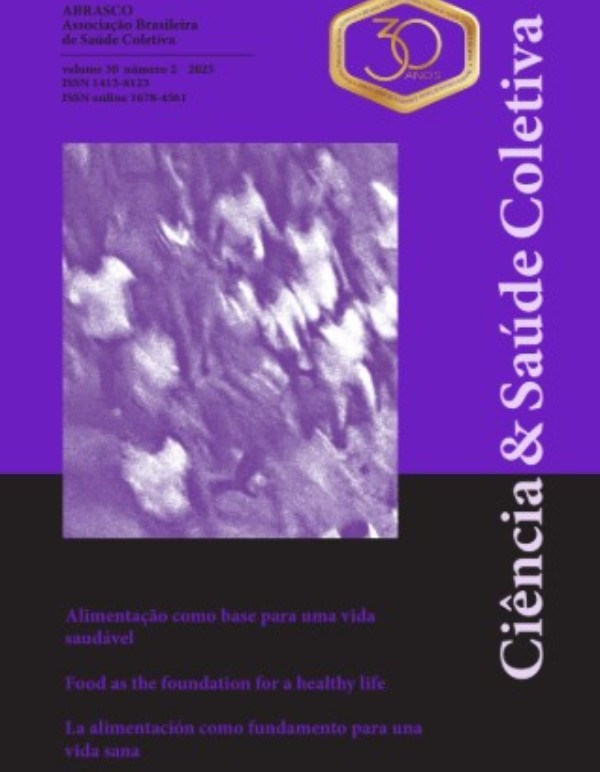0320/2023 - Low weight/length ratio at birth is associated with hospitalizations during the first year of life: a cohort study.
Razão peso/comprimento baixa ao nascer está associada com hospitalizações durante o primeiro ano de vida: um estudo de coorte
Autor:
• Rafaela Caroline Comin - Comin, R.C - <rafaelacomin@usp.br>ORCID: https://orcid.org/0000-0002-8148-3299
Coautor(es):
• Paulo Ricardo Higassiaraguti Rocha - Rocha, P.R.H - <paulo_higa16@hotmail.com>ORCID: https://orcid.org/0000-0002-4238-9603
• Viviane Cunha Cardoso - Cardoso, V.C - <vicuca@fmrp.usp.br>
ORCID: https://orcid.org/0000-0002-2677-5600
• Fabio Carmona - Carmona, F. - <carmona@fmrp.usp.br>
ORCID: https://orcid.org/0000-0001-5743-0325
Resumo:
Objective. To study the association of a low birth weight/length ratio (W/L) with the risk ofhospitalizations during the first year of life (YOL).
Methods. Cohort study of live birthsRibeirão Preto, Brazil in 2010 and 2011. Low W/L
was defined as below the 3 rd percentile for gestational age (GA) and sex according to the
Intergrowth 21 st . Single and multiple Cox proportional hazards models were modelled.
Results. 4,087 children were included, of which 741 (18.1%) had been hospitalized at least
once during the first YOL. In the univariate analysis, the factors associated with increased risk
of the outcome were: low W/L, inadequate prenatal care, maternal hypertension, black skin
color, and using the public health system. In the multivariate analysis, a low birth W/L was
associated with greater risk of all hospitalizations [adjusted hazard ratio (aHR) 2.67, 95%
confidence interval [95%CI] 1.98, 3.60], but this association disappeared when we excluded
neonatal hospitalizations (aHR 1.58, 95%CI 0.98, 2.54).
Conclusions. A low birth W/L for GA and sex was not associated with an increased risk of
hospitalizations during the first YOL beyond the neonatal period in a Brazilian cohort of live
births.
Palavras-chave:
weight/length ratio; anthropometry; hospitalization; morbidity; birth cohort.Abstract:
Objetivo. Estudar a associação de uma razão peso/comprimento (P/C) baixa ao nascer com orisco de hospitalizações durante o primeiro ano de vida (PAV).
Métodos. Estudo de coorte de nascidos vivos em Ribeirão Preto, Brasil em 2010 e 2011. P/C
baixa foi definida como abaixo do 3º percentil para idade gestacional (IG) e sexo de acordo
com Intergrowth 21 st . Modelos de riscos proporcionais de Cox simples e múltiplos foram
usados.
Resultados. 4.087 crianças foram incluídas (51,5% da coorte original), das quais 741 (18,1%)
foram hospitalizadas pelo menos uma vez durante o PAV. Na análise univariável, os fatores
associados a maior risco do desfecho foram: P/C baixa, pré-natal inadequado, hipertensão
materna, cor da pele negra e usar o sistema público de saúde. Na análise multivariável, a P/C
baixa ao nascer foi associada a maior risco de hospitalizações [hazard ratio ajustada (HRa)
2,67; intervalo de confiança de 95% (IC95%) 1,98; 3,60], mas esta associação desapareceu
quando excluímos as hospitalizações neonatais (HRa 1,58; IC95% 0,98; 2,54).
Conclusões. A razão P/C ao nascer baixa para IG e sexo não foi associada a maior risco de
hospitalizações durante o PAV além do período neonatal em uma coorte de nascidos vivos
brasileiros.













